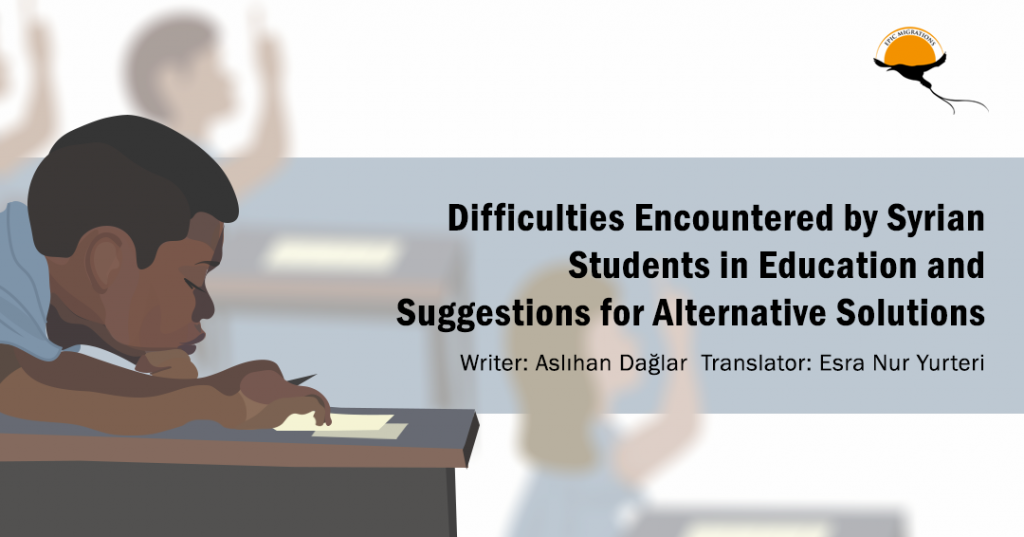According to last statement of the Refugees Association, there are 3 million 701 thousand 584 Syrian refugees in Turkey, 2 million 621 thousand 884 of whom are in the 0-18 age range. But children, who are school-age children, do not benefit from formal training. It can be said the reasons that there are factors such as socio-economic reasons, sending children to work instead of school due to economic concerns, families have not idea about how to demand their education rights. In Nitekim Şimşek’s study, a parent, who is Syrian, explained that most of the Syrian children cannot sustain their education, while those who started somehow interrupt their education due to financial difficulties.
At the same time it is worth noting that students are exposed to peer bullying and discrimination due to their socioeconomic status, ethnic origin and language differences. Children, who are ridiculed by their friends and not given enough care by their teachers, may left school and leave their education unfinished. In the same study by Şimşek, another parent stated that the children were discriminated at school, they were seated in the back rows and they were ostracized by being mocked by their friends. In addition, it is also reported that although they know Turkish very well, they hesitate to speak and do not want to go to school. It is another situation expressed by parents and students that despite the situation was reported to the classroom teachers.
I find it benefit to share some approaches that I think can be a solution to prevent children and parents who are sufficiently traumatized during migration from being traumatized by the difficulties brought by racism, marginalization and cultural differences:
- Students, who cannot sustain their education due to economic problems, can be identified and they should supported by economically.
- Students may be offered the opportunity to take lessons not only in Turkish, but also in Arabic, especially in their densely populated areas.
- Parents can be informed more clearly about which schools they will enroll their children in and at what stages.
- More concrete steps can be taken to implement the multicultural and multilingual education model in our schools.
- For instance, with the “Introduction to the Middle East” courses, students can get to know the nations in the geography they live in better. In the social studies, geography and history courses given at present, these subjects are briefly explained and not sufficiently emphasized. However, students who know the nations and cultures of the geography they live in can adapt to differences more easily.
- Teachers, who are equipped to provide multicultural education, can be trained.
- Society and students should be informed about the society regard as “other” and tolerance should be gained. Art, cinema and literature can be used for this.
- On social media, information pollution and discriminatory discourses targeting refugees can be combated.
- Students and their families can be provided with psychotherapy services and their psychological resilience can be increased.
References:
Mülteciler Derneği.(2021). “Türkiyedeki Suriyeli Sayısı Ağustos 2021”,Erişim Tarihi: 15 Eylül, 2021. https://multeciler.org.tr/turkiyedeki-suriyeli-sayisi/
Şimşek, D.(2019). “Türkiye’deki Suriyeli Çocukların Eğitime Erişimi:Engeller ve Öneriler”, Eğitim Bilim Toplum Dergisi, 17, ss.10-32.
Tüzün,I.(2017). “Türkiye’de Mülteci Çocukların Eğitim Hakkını ve Karşılıklı Uyumu Destekleyen Yaklaşımlar,Politikalar.” European Liberal Forum.

